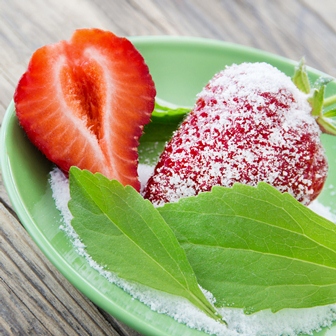 There is a variety of low calorie or no calorie artificial sweeteners or sugar substitutes to choose from. These products are some of the most heavily studied food ingredients around the world — with hundreds of studies reporting their safety — yet there still remains much controversy and misunderstanding about whether artificial sweeteners are safe to consume.
There is a variety of low calorie or no calorie artificial sweeteners or sugar substitutes to choose from. These products are some of the most heavily studied food ingredients around the world — with hundreds of studies reporting their safety — yet there still remains much controversy and misunderstanding about whether artificial sweeteners are safe to consume.
Much of the controversy is due to the abundance of information available that contains non-researched theories that have overshadowed the real researched-based studies that have been done to prove the safety of these “sugar substitutes.” It is very easy to do an Internet search and find information stating that a particular artificial sweetener is not safe, but there is often no research to back up this claim. Moreover, this misinformation is often presented in blog posts and website articles that are easier to understand than research-based journal articles, so consumers are far more likely to read and share these false claims.
So are artificial sweeteners safe? The short answer is “yes.” Here is a breakdown of the most common artificial sweeteners and how they work:
Saccharin
Saccharin is not metabolized by the body and simply passes through, so the body is not able to use it for calories. Saccharin has been around for more than 100 years and is used in more than 100 countries, with multiple research studies proving its safety. The one downside to using saccharin is that it cannot easily be used while cooking because it can turn bitter when heated.
Aspartame
Most commonly known as Equal, aspartame is used in more than 100 countries and has been thoroughly studied and proven to be safe, with one of the largest studies coming from Europe in 2013. Aspartame is made up of two individual amino acids, so it does contain calories. However, since it is so much sweeter than regular sugar, the equivalent of one calorie of aspartame is as sweet as 160 calories of sucrose, or common table sugar.
Sucralose
Most commonly known as Splenda, sucralose was approved for use as a general sweetener in 1999. It is 600-times as sweet as common table sugar. There have been more than 100 safety studies performed on sucralose over the last 20 years, with no safety concerns found. The majority of sucralose is not metabolized by the human digestive system; therefore, it yields no calories. Sucralose is heat stable, so it can be used when baking.
Stevia
Made from the leaves of a stevia plant, stevia is 200-times as sweet at table sugar. The process for making stevia is similar to that of making peppermint or vanilla extract. It may be called rebinia or stevia on a food label.
Overall, sugar substitutes can be a good way to enjoy sweets or sweetened beverages without all the calories typically associated with those types of foods. Even though there is a variety of contradictory information available, these sweeteners are considered safe when used in moderation.
Last Updated: January 19, 2022